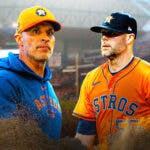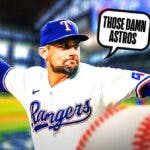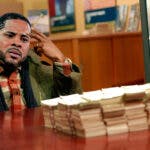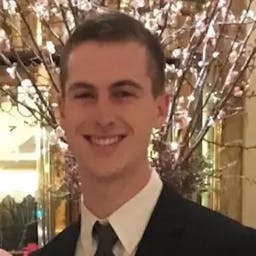Typically, the MLB trade deadline is a critical juncture for teams looking to add one or two final pieces to complete their World Series puzzle or make a final push for the playoffs. Oftentimes, this can mean superstars on expiring deals (think Manny Machado) or young stars that have struggled, but still have value (Chris Archer).
Of course, many players that are moved at the deadline tend to be playing for a new club when the next season rolls around. Machado, Brian Dozier and Jonathan Schoop are all players that were traded at the deadline, only to sign elsewhere in free agency.
However, there are a number of players acquired at last year's deadline that remain with those same clubs, and they could play an absolutely massive role in determining their team's success (or failure) in 2018.
Cole Hamels
With Yu Darvish sidelined due to injury and Tyler Chatwood unable to throw strikes, the Chicago Cubs made a play for Hamels last July.
Initially, fans in Chicago questioned whether the veteran would be effective for the Cubs. After all, his stat line in Texas was downright ugly. At the time he was acquired, Hamels had pitched to a 4.72 ERA and had given up an egregious 23 home runs.
But Hamels found new life on a team in the heat of a pennant race, posting a 2.36 ERA in 12 starts with the Cubs and justifying the team picking up his $20 million option in the offseason.
Hamels is the oldest starter on Chicago's staff, which features players that are all over 30 aside from Kyle Hendricks. And given the uncertainty surrounding Darvish's ability to bounce back from a second elbow procedure, the Cubs will need Hamels to string together quality starts over the course of a full season.
Part of Hamels' resurgence in Chicago had to do with his ability to reestablish the fastball. According to FanGraphs, Hamels threw his fastball twice as much in Chicago as he did with the Rangers, which played a crucial role in setting up his patented changeup.
He has only experienced a slight drop off in velocity over in the last couple of years, and at this point in his career it is more about mixing speeds and locations.
If Hamels can continue to be effective for a full season, he could potentially make the difference for a Cubs rotation that could be as deep as any in baseball.
Mike Moustakas
We stay in the National League Central, where the reigning divisional champion Brewers will start Moustakas at second base for the first time in his career.
The Brewers acquired a pair of infielders at the 2018 trade deadline, with Jonathan Schoop joining the team just three days after Moustakas. But while Schoop never got into a groove in Milwaukee, Moustakas was able to have some success, posting an above-average 103 wRC+ with his new team.
Milwaukee decided to bring him back on a one-year deal worth $10 million, which could end up being one of the steals of the offseason.
Not including 2016–a season where he missed all but 27 games due to injury–Moustakas has hit 20 homers in each of the last three seasons while posting at least a 2.0 fWAR.
The Brewers might be susceptible to regression in 2019, especially from reigning MVP Christian Yelich (who had one of the best half-seasons in MLB history) and Jesus Aguilar. But adding Moustakas to the lineup gives Milwaukee yet another run-producer in a lineup that suddenly looks pretty stacked.
Kevin Gausman
Gausman has had one of the more interesting career trajectories. He was pinned as a top prospect in the Orioles' farm system and had a phenomenal year as a 23-year-old, only to bounce between being effective and erratic over the next three seasons.
However, Gausman immediately provided the Braves with critical depth in their rotation after he was acquired at the deadline. In 10 starts, Gausman posted a 2.87 ERA while posting lows in HR/9 and hits per nine.
Atlanta will need Gausman to replicate his success this year, though it is worth noting that his other peripherals (FIP and K/9) were not nearly as encouraging as his ERA.
That said, Atlanta has one of the best defenses in baseball, so if he can pitch to contact and keep the ball in the yard, he might continue to be very effective.
With Mike Foltynewicz already experiencing elbow soreness and the Braves losing Anibal Sanchez, Gausman plays a crucial role in providing quality starts while also acting as a sort of stop-gap as Atlanta waits for Touki Toussaint, Kyle Wright and Mike Soroka to develop.
Nathan Eovaldi
If you didn't know much about Eovaldi prior to this season, you surely found out more after his incredible six innings of relief in Game 3 of the 2018 World Series… on just one day of rest.
Eovaldi was one of Boston's only major acquisitions in the deadline, and his performance with the Red Sox (3.33 ERA in 11 regular season starts to go along with the postseason heroics out of the bullpen) earned him a four-year $68 million deal in the offseason.
Of course, Boston's lineup is deadly, having scored the most runs in baseball last season. But with Eovaldi on board for a full season, the Red Sox have a legitimate starting rotation to compliment the bats.
Eovaldi's peripherals match up nicely. He posted a 2.88 FIP in Boston, and his fastball routinely sits in the upper 90s. He has yet to turn 30, which means he could be on the cusp of a career season.
However, his versatility is his most important asset to the Red Sox. Eovaldi could go out and win 10-14 games in the regular season, then return to be a reliever once again in October.
Eovaldi's effectiveness out of the bullpen is all the more pertinent to his value considering that Boston is letting Craig Kimbrel walk and handing the keys to mostly makeshift group of arms.
Brad Hand
Speaking of teams with makeshift bullpens… the 2019 Cleveland Indians, everyone!
Now, Andrew Miller offered almost no value as he was ineffective even when healthy in 2018. And Cody Allen had the worst season of his career after three consecutive seasons with at least 30 saves and a sub-3.00 ERA.
Still, their respective absences means that Hand is officially “the guy” in Cleveland. While the starting rotation might be the best in baseball, the bullpen lacks quality depth. Even if Adam Cimber and Dan Otero have bounce back years, there aren't too many reliable arms.
Thus, Hand will need to continue his recent string of dominance. After being acquired to help solve some of Cleveland's bullpen issues in 2018, Hand posted a 2.28 ERA and eight saves in 28 appearances.
The Indians will hope for their starters to go deep into games, but it may not be out of the question for Hand to top 80 or even 90 innings this year despite his role as a closer. Cleveland is that thin in the pen.
Ryan Pressly
The Astros had the deepest pitching staff in the bigs in 2018. Despite some early-season struggles from presumed closer Ken Giles (who was eventually traded in the deal to land Roberto Osuna), Houston's bullpen still posted an MLB-best 3.03 ERA while ranking third in terms of fWAR.
However, with Charlie Morton heading to the Rays in free agency and Dallas Keuchel still unsigned, former relievers Brad Peacock and Collin McHugh will now be part of the rotation, depleting that bullpen fairly significantly.
Which makes Pressly that much more essential. The 30-year-old was tremendous upon arriving in Houston, posting a 0.77 ERA and 12.34 K/9 in 23 1/3 innings. The Astros, in turn, rewarded him with a two-year, $17.5 million extension.
Make no mistake, Houston will be hoping he earns every penny in a year where they will be pressed for arms in the bullpen. Pressly may even step into the closer role should Osuna begin to struggle. His value is unmitigated for this Astros team.
Tommy Pham
After mostly playing as a utility man for the St. Louis Cardinals in his first couple seasons in the bigs, Pham broke out in 2017. He hit .306 with a .931 OPS, 20 homers and 20 stolen bases while finishing 11th in the NL MVP voting.
Unfortunately, Pham struggled to sustain this success in 2018, hitting just .248 and slugging a mere .399 in 98 games with the Redbirds.
But upon being traded to the Rays on deadline day, Pham took off. In 39 games with Tampa Bay, Pham hit .343 with a 1.071 OPS and 191 OPS+, showcasing the talent that made him an MVP candidate in the year prior.
Pham's age (31) makes him a bit of a wild card, but his combination of power and speed are undeniable, and he clearly has the ability to thrive at the major league level.
The Rays will be out to prove that their 90 wins in 2018 were no fluke, and another MVP-like season from Pham would go a long way in a lineup that will rely on progression from a lot of Tampa Bay's youngsters.




